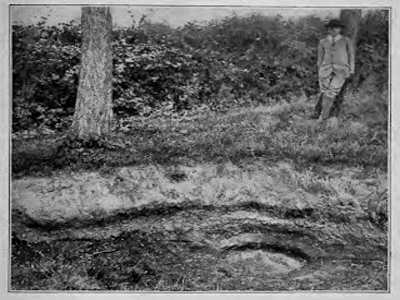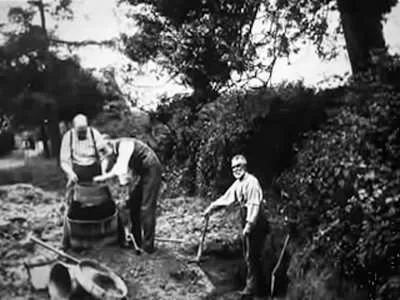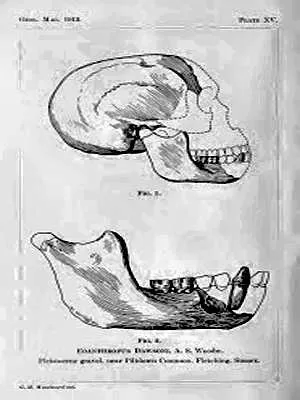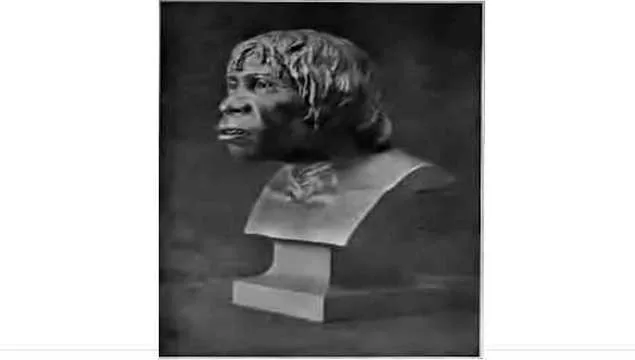The story of the Piltdown Man is one of the most notorious hoaxes in the history of archaeology, a tale that intertwines ambition, deception, and the quest for scientific prestige. At the center of this scandal was Charles Dawson, a country solicitor from Lewes, Sussex, whose early fascination with fossils led him to become a prominent figure in the amateur archaeology scene.
Dubbed the “Wizard of Sussex” by The Sussex Daily News, Dawson’s discoveries included several species named in his honor, such as Iguanodon dawsoni and Plagiaulax dawsoni. However, it was his involvement in the Piltdown discovery that would ultimately define his legacy—though not in the way he had hoped.
Discovery of Piltdown Man
In 1908, while working at a gravel pit in Piltdown, East Sussex, laborers unearthed what they believed to be a fossilized coconut. Dawson, however, recognized the potential significance of the find and returned to the site multiple times, uncovering additional fragments that he believed were parts of a skull.

Consulting with Arthur Smith Woodward, the Keeper of Geology at the British Museum, Dawson presented his findings to the Royal Geographical Society on December 18, 1912. The paper, titled “On the Discovery of a Palaeolithic Human Skull and Mandible in a Flint-bearing Gravel overlying the Wealden (Hastings Beds) at Piltdown, Fletching (Sussex),” introduced the world to Eoanthropus dawsoni, or Piltdown Man.
The announcement sent shockwaves through the scientific community. Piltdown Man was hailed as the oldest fossil hominid found in Europe, a crucial piece in the puzzle of human evolution. The combination of a human-like parietal bone and an ape-like mandible suggested a “missing link” between humans and apes, and importantly, it was English—unlike the Neanderthals discovered in Germany. Alongside the skull, Dawson presented various animal bones, including those of elephants, mastodons, and even hippopotamuses, which he claimed were found in the same layer of gravel.
Controversy Grows
Despite the initial excitement, skepticism began to emerge. The jawbone’s structure was inconsistent with human anatomy, featuring a thin, inwardly curved flange typical of apes. Furthermore, the molars showed signs of wear consistent with a diet of tough vegetation, raising questions about the authenticity of the find. Notably, Professor Arthur Keith pointed out that the canine tooth found later by Pierre Teilhard de Chardin would have made chewing impossible due to its protrusion over the molar line.

In the winter of 1915, Dawson provided Woodward with additional fragments from a second skull found near Piltdown. These pieces seemed to confirm the existence of Piltdown Man, but the odds of finding two separate sets of bones from a man and an ape in such proximity were astronomically low. Dawson’s death in 1916 left the mystery unsolved, and no further discoveries were made at Piltdown.
Impact of the Hoax
The implications of the Piltdown finds were profound. As noted by Professor Hugo von Buttel-Reepen, general treatises on Pleistocene Man published before 1908 became nearly obsolete. The Piltdown Man’s supposed significance led researchers to overlook African fossils of australopithecines, which were more likely candidates for the ancestors of Homo habilis. As more remains were discovered globally, Piltdown Man became an anomaly, often excluded from reconstructions of the human evolutionary tree.

In 1943, the idea of conducting fluorine tests on the bones was proposed, and by 1949, the results indicated that Piltdown Man was much more recent than previously believed. The breakthrough came in 1953 when Kenneth Oakley, a geologist at the British Museum, and Joseph Weiner, a South African anthropologist, revisited the original fossils. Their findings revealed that the cranium was human but only about 500 years old, likely of Australian origin. The jawbone was identified as belonging to a sub-fossil orangutan, and the canine tooth was from a modern ape, cleverly painted to appear ancient.
Unmasking of the Hoax
The meticulous examination of the Piltdown fossils unveiled a shocking truth: the bones had been artificially aged using potassium dichromate, and the molars had been filed down to create the illusion of wear. The features that would have allowed for a definitive species identification had been deliberately damaged. The revelation of the hoax sent ripples through the scientific community, leading to a reevaluation of Dawson’s other purported discoveries.

Since the unmasking of Piltdown Man, numerous theories have emerged regarding the motivations behind the hoax. Some have speculated that Arthur Conan Doyle, the famous author and local resident, may have been involved due to his penchant for pranks. Others have pointed fingers at Woodward, who was deeply invested in the discovery. However, the most compelling evidence points to Dawson himself. His history of dubious finds—at least thirty-eight of which have since been proven to be fakes—suggests a pattern of self-aggrandizement.
Conclusion: Lessons from the Piltdown Hoax
The Piltdown Man hoax serves as a cautionary tale in the field of archaeology and anthropology. It highlights the dangers of ambition and the desire for recognition, which can lead individuals to compromise scientific integrity. The scandal not only misled researchers for decades but also delayed the acceptance of more accurate theories regarding human evolution.
As we reflect on the Piltdown Man, we are reminded of the importance of skepticism and rigorous scientific inquiry. The story of Charles Dawson and his infamous find is a testament to the complexities of human nature and the lengths to which some will go in the pursuit of fame. Today, the Piltdown Man remains a symbol of the need for vigilance in the quest for knowledge, ensuring that the past is understood with clarity and honesty.

